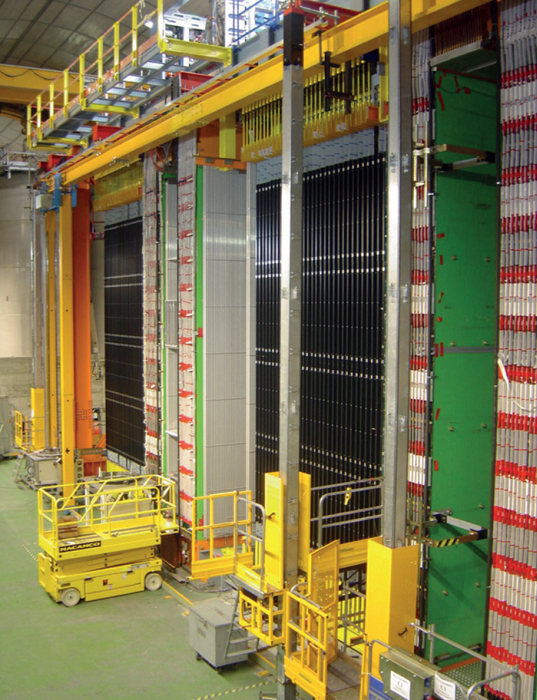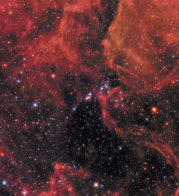
Image credit: OPERA.
The OPERA experiment at the INFN Gran Sasso Laboratory has detected a fourth example of neutrino oscillation, with a muon neutrino (νμ) produced at CERN detected as a τ neutrino (ντ) after travelling a distance of 730 km.
The international OPERA experiment, which involves 140 physicists from 28 research institutes in 11 countries, was designed to observe this exceptionally rare phenomenon, gathering data in the neutrino beam produced by the CERN Neutrinos to Gran Sasso (CNGS) project. Generated by decays of pions and kaons made in the interactions of a proton beam from the Super Proton Synchrotron with a graphite target, the beam consisted mainly of νμ that would pass unhindered through the Earth’s crust towards Gran Sasso. The appearance and subsequent decay of a τ lepton in the OPERA experiment provides the telltale sign of νμ to ντ oscillation through a charged-current interaction.
After the first neutrinos arrived at the Gran Sasso Laboratory in 2006, the experiment gathered data for five consecutive years, from 2008 to 2012, during which the CNGS beam delivered a total of 17.97 × 1019 protons on target, yielding 19,500 neutrino events in the detector. The first ντ was observed in 2010, the second and third ones in 2012 and 2013, respectively.
The detection of the fourth ντ is important confirmation of the events seen previously. It means that the νμ to ντ transition has been seen for the first time with a statistical significance exceeding the 4σ level, so that OPERA can now claim the observation of this extremely rare phenomenon. The collaboration will continue to search for ντ in the data that remain to be analysed.





